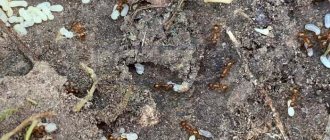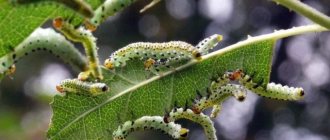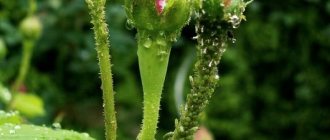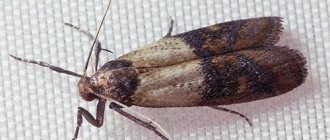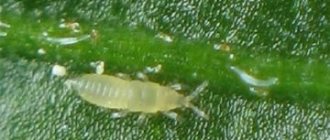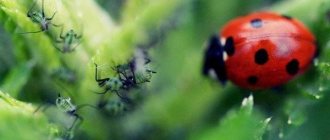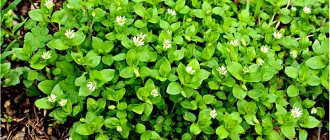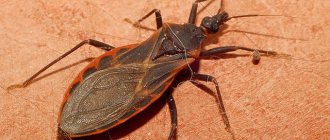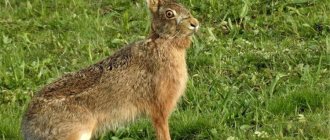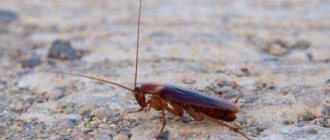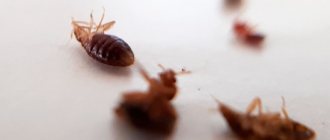Linden, honey collection from 1 ha - 900 - 1200 kg
Among all perennial honey plants, linden is rightfully considered the most honey tree, as if created specifically for bees. The flowering period is only a couple of weeks, but during this time the bees manage to collect a huge amount of nectar from it. The aroma of a blooming linden attracts whole clouds of striped workers; the tree literally oozes with sweet nectar that drips from its flowers and sticks to the leaves. The linden flowering season, depending on its variety, region of growth, weather and climatic conditions, can range from the end of May to the end of July.
Despite this “stickiness”, linden is one of the most popular urban ornamental crops. It reaches a height of 30 meters, the leaves of the crown are of a classic pyramidal shape. Young leaves are light green, seem translucent in the rays of the May sun, and at the end of flowering they acquire a dense dark bottle color. The trunk is almost perfectly round, the bark is dark gray, almost black.
Linden honey is usually colorless and transparent, but can have shades from light green to amber. It crystallizes 3-4 months after pumping out; during long-term storage, it gradually loses its healing properties, so it is recommended for use in a fresh state.
Acacia, honey collection from 1 hectare - up to 1000 kg
This honey tree blooms for about three weeks, and during this time the bees manage to collect a lot of nectar and pollen from its flowers. The flowering period can be approximately from the first half of May to mid-June. Acacia is a fast-growing and long-lived tree, growing especially in the first 10 years when it adds more than a meter in height each year. In total, acacia lives up to 100 years.
Acacia takes root well in urban environments, tolerates gas pollution, but does not like soil compaction and prefers loose, well-aerated soils. Acacia is a southern plant that is not adapted to long-term, deep cold weather. Feels good in Europe (except Scandinavia), on the territory of Ukraine, in the south of European Russia, in the Far East,
Acacia honey is considered one of the finest varieties. It is light and transparent, has a clean taste without bitterness, retains a liquid consistency for a long time (up to 2 years!), and does not lose its nutritional and medicinal qualities during storage. Well, if you save it until it is candied, it becomes pure white.
Dereza (goji), honey harvest from 1 hectare - up to 800 kg
This perennial honey plant is a widely spreading shrub with many thorny branches, reaching three meters in height. In places where it grows wild it can form quite dense thickets. These are the slopes of ravines and high river banks of the steppe and forest-steppe zones, wastelands and other inconvenient and abandoned areas where it is impossible to cultivate any agricultural crops. And yet, this “king of the impenetrable chigir” is an excellent honey plant. Its special value is that its flowering period covers almost six months: from early May to mid-October. At the same time, the productivity of honey collection depends little on the weather and soil conditions.
It is interesting that dereza is originally from China, but has taken root very well throughout central Eurasia. The Chinese name for this perennial is goji. Nosy marketers have spun many legends about goji berries - they help you lose weight, generate indestructible potency, and in general their regular consumption is a panacea for all ailments. However, putting aside the advertising gloss, we can say that wolfberry fruits and honey from its nectar are really useful for optimizing metabolism, raising tone and strengthening the immune system.
Amur velvet, honey collection from 1 ha - 280 - 350 kg
The homeland of this honey tree and the main growing region is the Far East, Korea, China, Tibet. Velvet blooms after the 18th year of life, and lives for 300 years, reaching a trunk diameter of more than a meter. The flowering period is about a week from mid-June to the end of July. Productivity is very dependent on the weather: on rainy and cloudy days it may not produce nectar at all, but on sunny days it produces maximum honey production. For example, one bee colony can bring up to 30 kg of honey in this short season - dark yellow or brown with a specific smell.
Vinegar tree (Ailanthus, Chinese ash), honey collection from 1 hectare - up to 300 kg
Also Chinese by origin, especially actively cultivated in Moldova and in the south and center of Ukraine. It blooms for two weeks between mid-May and mid-June. In clear weather, bees graze on its flowering crown literally from dawn to dusk, collecting the nectar generously secreted by the flowers. Seasonal honey bribe per bee colony is about 10 kg.
Related article: Shooting plants: names, photos, cultivation
This tree grows up to 20 meters in height, has original palm-shaped leaves, very convenient for planting in cities. In summer, its crown provides dense shade, and in winter, when the leaves fall, it completely opens the ground to the sun's rays.
Ailanthus honey is amber in color with its own original smell and taste.
Maple, honey collection from 1 ha - 150 - 200 kg
Various types of maple on our continent are found both in deciduous forests and in urban plantings throughout the middle zone. Maple is easily recognizable by its characteristic carved “maple” leaf shape. Flowering season is the first half of May. And although the maple’s nectar production is practically independent of the weather, this honey is not so often found on the market, since it is a product of the season in which the bee colonies are not yet strong enough to produce a powerful market.
At the same time, maple honey is a very valuable product, rich in vitamins and minerals. Its use is recommended even for nursing mothers, and all its beneficial properties are transmitted to the child through mother's milk. It strengthens the immune system; it is believed that among all honey varieties, maple honey is the best for the prevention and treatment of female and male diseases of the genitourinary system. Its color, depending on the type of maple, can range from transparent white to pale amber.
Barberry, honey collection from 1 ha - 80 - 200 kg
This perennial is a spreading thorny shrub up to 2.5 meters high. The yellow honey plant blooms at the end of May - June, and for quite a long time - up to three weeks. Barberry feels good on our continent and is cultivated in the south and central Europe, southern Ukraine, Crimea, and the Caucasus.
Honey is of medium viscosity, golden-amber color with a very pleasant delicate taste and aroma. It has an average crystallization period of up to 6 months. It contains a lot of potassium, which is why it is considered a good antibacterial and anti-inflammatory product.
Willow (willow), honey collection per 1 ha - 150 kg
With all the varieties of this durable perennial, willow is always a powerful tree (up to 3 m in diameter) with a “weeping” crown of surprisingly elastic branches with thin delicate leaves. It blooms very early - in April - early May, flowering lasts up to 2 weeks. Widely distributed throughout central Eurasia, loves moist soil, and grows even in areas flooded by spring floods.
Palm honey, like maple honey, is not a frequent visitor to food counters, which is also due to its early flowering. However, even a bee colony that is not strong after wintering can bring up to 4 kg of it per day. The freshly pumped product has a golden yellow color, which as it ages becomes light cream with a fine-grained structure after crystallization.
Raspberries, honey harvest from 1 ha - 50 - 100 kg
Raspberries are not just a shrub that bears divinely delicious fruits, but also a good honey plant. Raspberries grow throughout the Eurasian continent, except for the regions of the Far North with permafrost. The convenient downward slope of the flowers allows bees to collect nectar and pollen even during light rain. In general, bees graze on raspberries from early morning and even some time after sunset. Raspberry flowers secrete nectar so abundantly that a bee can visit no more than 5 flowers in one flight, which is why raspberries are processed so intensively. Raspberries bloom for a very long time - a month in the middle forest-steppe zone and up to two months closer to the northern edge of the distribution halo. It is interesting that bees collect more honey from forest (wild) raspberries, according to which its collection reaches 100 kg per hectare, and on garden varieties of raspberries - about 2 times less.
Raspberry honey is transparent, with a slight golden tint, and after crystallization it takes on a creamy color. The smell is very pleasant, similar to the smell of blooming raspberries. Just like berries, raspberry honey is rich in vitamins A, B. C, and is very useful in the treatment and prevention of colds, strengthens the overall immune system.
Oak, honey collection from 1 ha - 60 kg
Oak is one of the most powerful and perennial trees on the planet; it can live up to 2000 years, although in reality it usually lives up to 400 years. Oak grows slowly, reaches maturity and begins to bloom and bear fruit at the age of 40 - 60 years. As a honey plant, it is of interest to bees mainly as a source of pollen (pollen) from male flowers, and much less often - nectar from female flowers. At the same time, the basis of honey collection from oak is a product not obtained from nectar. Where oak trees grow in large tracts, bees collect a lot of honeydew and honeydew from the trees, from which honeydew honey is produced.
In addition to oak, honeydew honey is also collected from coniferous forests - spruce, pine, and cedar. It is believed that padium honey has high nutritional value and contains a lot of phosphorus, calcium, and potassium. Although it has long been customary in Rus' to classify it as a low grade, since it is made from excrement and decomposing corpses of insects. It is very thick and viscous and does not crystallize for a long time. It should be noted that it is not suitable for feeding the bees themselves, therefore, if it appears in the frame, it must be pumped out and not left for the winter.
Lilac, honey harvest from 1 ha - 60 kg
A well-known perennial, it is a spreading shrub that can reach 8 meters in height. Lilac blooms in May, flowering duration is about 2 weeks. Many beekeepers do not classify it as a productive honey plant because of the inconvenient structure of the flower for the bee, although lilac produces a lot of nectar, even a lot. In favorable weather there is so much of it that it fills the funnel of each flower almost halfway. A bee simply physiologically cannot get nectar from a flower on its own, unless by resorting to the help of its competitors - bumblebees, using holes in flowers gnawed by these furry “vandals”.
Related article: Aquarium plants: names and photos, content features
One way or another, pure lilac honey is very rare; it is usually obtained during the first pumping as part of May honey.
Chestnut, honey harvest from 1 ha - 25 kg
One of the most popular urban trees in the middle zone of the continent, especially closer to the south. Blooms in May for about 2 weeks. As a honey tree, chestnut produces quite a lot of nectar and pollen when flowering; this perennial is one of the early honey plants.
Chestnut honey is light and flowing, transparent and light with its own original smell. It can remain in a liquid state for quite a long time, but it is not recommended to leave it in a frame for the winter, since by the onset of cold weather it begins to crystallize. Among its healing properties, it increases the hemoglobin level in the blood, since it contains a lot of iron, is also a good antiseptic, and accelerates wound healing.
Honey-bearing herbs and flowers
A huge variety of honey-bearing herbs and flowers are known. Among them there are both annual and perennial representatives. Among such diversity, particularly important species should be highlighted.
Table of honey plants in central Russia and other regions:
Heather
This flowering plant is an autumn honey plant. Up to 100 kg of honey is collected from one hectare.
Heather honey is characterized by a dark reddish or brownish color, a bitter taste and a strong aroma.
Due to the high content of protein substances, the product does not crystallize during long-term storage, but coagulates to a jelly state. After pumping, it immediately takes on the consistency of jelly.
Heather honey is useful for colds, urolithiasis and cystitis.
Buckwheat
This herbaceous crop is called seed, common or edible. It is placed in first place among honey plants in most Russian regions.
Under favorable conditions, one hectare sown with buckwheat can provide up to 80 kg of honey. Such an area requires 2-3 bee colonies. Insects collect raw materials throughout August.
The flowers of the plant provide bees with nectar and greenish-yellow pollen in large quantities.
Buckwheat honey is characterized by a dark color and a special taste. The composition of the product is rich in iron and has high antiseptic properties.
Sweet clover
White and yellow sweet clover are valued as honey plants. The plant is attractive for its long flowering, which begins in July and ends only at the end of autumn.
Sweet clover is capable of producing up to 600 kg of honey per hectare. Sweet clover honey is distinguished by its light color, delicate consistency, pleasant aroma and excellent taste.
The fresh product has a light watery color. It quickly crystallizes, becoming white or light amber and having a subtle vanilla aroma.
Sweet clover honey is rich in glucose, beneficial for the central nervous system, and is a stimulator of lactation.
goldenrod
This herbaceous plant is a late summer or autumn honey plant.
It is highly valued for providing a winter supply of pollen and honey. The plant's honey productivity is moderate - one hectare of plantings can produce up to 120 kg of honey.
The product may be dark yellow or light brown with a red tint. Goldenrod honey has a unique aroma and bitter taste.
Due to its healing properties, the product is used in the treatment of bladder, liver, and dermatitis.
Ivan-tea (fireweed)
This herbaceous perennial is a summer honey plant.
Its honey productivity can be up to 600 kg per hectare. Fireweed blooms in June-July and lasts about 40 days.
Honey is transparent, greenish in color and has a delicate aroma. Crystallizes to a white creamy mass.
Turns yellow when heated. In folk medicine, the product is valued for its soothing and anti-inflammatory properties.
Clover
This plant is one of the best honey plants. Its productivity can reach 200 kg per hectare.
The main flowering period is observed in June-July. The product obtained from clover is attractive with its rich amber color and strong aroma. Its consistency is viscous.
Coriander
The product obtained from this herbaceous annual is called coriander or calander. The plant is a summer honey plant and usually blooms in June.
From one hectare you can get up to 200 kg. Coriander honey is transparent and may have a light brown or amber color. The aroma characteristics of the product depend on the variety.
Due to the high content of essential oils, the smell of the product is spicy and pungent.
Honey has a specific taste, it has a medicinal caramel aftertaste. Coriander honey has many healing properties.
It is good for digestion, treats gastrointestinal diseases, and restores appetite. The product has antiseptic, analgesic and bronchodilator properties.
Dandelion
This herbaceous perennial is called ordinary, field, medicinal, and pharmaceutical. An average of 4.5 kg of honey can be collected from one hectare.
Flowering occurs mainly in May-June. Dandelion honey is thick and golden yellow in color.
The product crystallizes quickly, has a strong odor and a peculiar pungent taste.
Dandelion honey has no commercial value - bees eat it in the spring. The product is also a feed additive for adult insect brood.
Sow thistle
This herbaceous perennial is called field, yellow, euphorbia.
The plant is considered a weed and blooms in summer and autumn. Thistle is characterized by high honey productivity - about 400 kg of product can be collected from one hectare.
Thistle honey has a white or light yellow color and a pleasant taste. The product is first class.
Thistle honey is valued for its nutritional properties. In folk medicine it is most often used as a remedy for exhaustion, especially in the postoperative period in children and the elderly.
Sunflower
This herbaceous annual is a source of not only seeds, but also honey. Up to 50 kg of product is collected from one hectare. Flowering lasts an average of 30 days and occurs in July-August.
One should distinguish annual sunflower from tuberous sunflower, although it is also a honey plant.
In liquid form, the product has excellent taste. Sunflower honey quickly crystallizes, acquiring a light amber color.
Sometimes a greenish tint is observed. Crystallized honey has a faint aroma and a pleasant taste with tart notes.
Sunflower honey has high enzymatic activity. It has valuable dietary qualities, restorative and diuretic properties.
Rape
This herbaceous annual is an early spring honey plant when sown in autumn.
Winter rapeseed provides honey productivity of 60-90 kg per hectare. Rapeseed honey has a whitish or yellowish color, a very sweet taste and a special aroma.
The density of the product is very high, it crystallizes quickly. The process of crystal formation can begin already in the honeycomb.
The resulting crystals have a white color, a persistent floral aroma and a tart taste. Rapeseed honey requires special storage conditions, as it can quickly turn sour.
The product is high in glucose, which is good for brain activity. Rapeseed honey is good for bone structures and the liver, and helps remove heavy metals from the body.
Common bruise
This herbaceous plant is a valuable summer honey plant. One hectare can produce up to 800 kg of honey. The product obtained from an ordinary bruise is first-class.
It is distinguished by its light or light amber color. The product has a pleasant taste and faint aroma.
Honey has a thick consistency and crystallizes slowly, resulting in the formation of a fine-grained deposit.
Honey from common bruise is good for the cardiovascular system and has a calming effect.
Phacelia
This herbaceous annual is one of the best honey plants.
One hectare of crops can provide half a ton of honey. With proper sowing organization, flowering continues almost all summer.
The product obtained from this plant has a sweet, tart and spicy taste. The color can be different - pale yellow, pale green or pale blue.
When thickened, the mass usually has a white color and a dough-like texture. This honey contains many vitamins and microelements.
Most of all it contains potassium, chromium, calcium, zinc, manganese, cobalt and silver.
Clean
This herbaceous plant is also popularly called toadweed. It is an early spring honey plant. Bees willingly fly to this plant.
From one hectare you can get up to 15 kg of product.
Honey plants for bees - what they are, what are their features
Honey plants are those that, during the process of growth and flowering, produce pollen and nectar, which bees feed on, and process it into honey. Bee colonies fly up to 3 km from the apiary in search of attractive aromas of bright flowers of plants for food.
Honey plants can be cultivated, which beekeepers or agronomists sow specially (artificially), or wild, which grow and disperse naturally. In nature, there are many types of honey plants, which differ in appearance, structure, fertility and other things.
The peculiarities of these plants are that they emit a special aroma and bloom with bright flowers, which are very attractive to bee colonies. Honey plants are absolutely safe and are excellent nectar plants for feeding bees.
Flowering calendar of honey plants in the middle zone
In order to find out the time of harvest from a certain type of plant, you need to learn how to use the flowering calendar of honey plants in the middle zone. The table below shows the approximate time of the beginning of flowering of plants and the period of their flowering.
| Honey plant name | Flowering start date | Flowering time (days) |
| Hazel | April 22 | 6 |
| Lungwort | April 23 | 30 |
| Willow | April 28 | 10 |
| Maple | May 15 | 10 |
| Gooseberry | May 18 | 31 |
| Dandelion | May 18 | 30 |
| Black currant | May 20 | 10 |
| Bird cherry | May 21st | 12 |
| Plum | 22nd of May | 7 |
| Acacia | May 25 | 13 |
| Apple tree | May 20 | 10 |
| Rowan | May 30 | 10 |
| Kalina | June 11 | 12 |
| Blue cornflower | June 15 | 45 |
| Clover | June 16 | 22 |
| Buckwheat | 5'th of July | 30 |
| Linden | July 8 | 14 |
With the help of such a calendar, it is easy to navigate the timing of harvesting the desired harvest in the desired area. Each beekeeper is required to draw up a flowering calendar for himself, taking into account the area and the presence of plants near the apiary. A properly compiled calendar helps the beekeeper reap a good harvest.
If the apiary is mobile and several moves are planned in one season, then the beekeeper must create as many calendars as there will be movements. Before compiling, it is necessary to carefully study the area, whether it is rocky or flat terrain, southern or northern region. Each region differs in the beginning and duration of flowering of honey plants.
A correctly compiled calendar and the ability to navigate the area allows the beekeeper to plan the work of the apiary, strengthen and increase the number of bee colonies. Also, with its help, beekeeping will always bring pleasure and profit. The main thing is to work fruitfully and “communicate” with the bees. Love and care for them will only bring benefits and delicious honey.
In nature, there are many honey plants that either grow naturally or are grown artificially. Each of them differs in type, shape, structure and amount of nectar and pollen secreted. Beekeepers carefully study the area around the apiary or roaming area, find future honey plants or sow new ones, and compile flowering calendars. With such responsible work, the bees will be well-fed, the harvest will be rich, and the bee business will be profitable.
Perennial honey plants for bees, the best honey plants sown specifically for bees
There are honey plants from which you can collect large quantities of high-quality honey. For good profits and a rich harvest, beekeepers must sow the fields with the necessary plants. Honey plants sown specifically for bees:
- White and yellow sweet clover is perennial, reaches 150 cm in height, is characterized by a persistent rich aroma and bright flowers. It grows in places where many plants cannot survive, for example, on roadsides or in ravines. From 1 hectare of field you can harvest up to 600 kg of crop.
- Sainfoin - grows throughout the middle zone, belongs to the legume family. Distribution area: meadows, forest edges and clearings. Seed, sand and Transcaucasian sainfoin are sown on the territory of Russia. The plant is used for hay and grass meal for farm livestock. Characterized by pink and purple flowers that are particularly attractive to bees. From 1 hectare of sainfoin fields, bee colonies collect up to 400 kg of honey.
- Mordovnik is a valuable honey plant and a highly fertile plant - from 1 hectare the honey yield is 1200 kilograms of honey. The plant is not afraid of drought, frost, with a strong rhizome. It grows almost everywhere, reaches 200 cm in length in the steppes, forest edges and on slopes.
- Blueberry is a medicinal plant with a wonderful delicate aroma, blue flowers in the shape of small bells. The smell of a bruise attracts bees from great distances. Unpretentious, all it needs to grow is the sun. From 1 hectare of bruise field you can collect 850 kg of product.
- Heather - the height of the plant is up to 70 cm, its feature is considered to be its evergreen color, it blooms with purple bells. The middle zone is excellent for heather and is absolutely unpretentious. The only condition for survival is that there should be no alkaline substances in the soil. Up to 200 kg of honey is collected from 1 hectare of land.
- Linden is a honey plant that has no equal. From 1 hectare, 100 kg of the most valuable honey is collected, which contains a huge amount of healing components. From 1 mature tree, bees can collect 3-5 buckets of honey. However, with strong winds, drought and rain, the nectar is washed away and blown away. Natural disasters lead to a sharp decrease in harvest.
Perennial honey plants for bees are especially valued among beekeepers. Sown perennial plants help maintain the required growth. Which plant to sow for harvest is up to everyone. It is profitable to sow perennials; you can draw up a calendar of honey plants and reap a good harvest and keep your business at a high level.
Common bruise
Sinyak is a honey plant grass (blue rannik), which is recognized as one of the best. Bees actively visit the flowers of this plant due to the abundance of nectar in them. It is a biennial plant, reaching up to 1-1.8 m in height. Flowering occurs in the 2nd year. The flowers are large on elongated peduncles, first pink, and then bright blue. Collected in spike-shaped inflorescences. The leaves are narrow and long, the root goes deep into the ground. They sow the fields with bruise before the winter just before the frosts, so that they do not have time to sprout and freeze.
Important! A distinctive feature of this honey-bearing grass is its ability to release nectar in large quantities under any weather conditions.
Even in a rainy summer, the beekeeper will not lose money if his field is sown with this crop. And in the sunny, prosperous warm season, bees collect up to 800 kg of honey per hectare from this plant, while buckwheat produces up to 100 kg, and sweet clover - 200-300 kg.
There are 2 ways to sow blue early seed:
- Clean seeding. This method is good in the southern regions and the middle zone.
- Sowing with a cover crop. In conditions with harsh winters, the plant can freeze, so in Siberia it is planted together with oats, but the amount of cover crop is taken 20-30% less so as not to cause bruising. Oats grow quickly and can be mowed in 1.5 months as a feed crop for animals.
Additional Information! About 1 hectare of common bruise can replace several hectares of other honey crops.
In the spring, after the seeds germinate, the rouge forms a rosette and a root that penetrates far into the ground. By the end of the first year of life, the plant grows up to 30 cm and in this form goes into winter. The second year of life also begins with the formation of a rosette. It will soon grow from 5 to 7 tall stems. The largest increase continues until July, simultaneously with the beginning of budding. The flowers open gradually from bottom to top. One flower produces nectar for 2 days. One plant can produce from 900 to 4000 flowers per season.
What types of honey plant seeds are there, price. Honey plant mixture
Honey plant seeds are used for sowing honey plants, which help to retain honey and also increase the main honey yield. Honey plants are divided into bushes, garden flowers and trees, wild flowers, and weeds.
There are honey plant seeds in pure and mixed forms. Pure - plants of one type of crop, for example, phacelia or meadow clover. Mixed - several crops in one package of seeds. The mixed seed type of crops provides a continuous flower-nectar conveyor, which gives a good harvest and a sufficient amount of food for bees.
You can buy seeds in Moscow for 1 kilogram at approximately the following prices:
- Phacelia – 120 rubles.
- Bruise – 200 rubles.
- Yellow clover – 90 rubles.
- Clover -170 rubles.
- Mustard – 35 rubles.
- Milk thistle – 180 rubles.
- Mordovnik – 650 rubles.
Article on the topic: Indoor lily - planting and care: watering, fertilizing, propagation. Lily hybrids
Honey-bearing qualities of Echinops:
You may not believe it, but this is the honest truth: the honey yield from 1 hectare of land sown with Mordovnik is 1200 kg. Therefore, take note: the perennial honey plant Mordovnik is a source of excellent honey with an amazing taste, in no way inferior to the linden monoflor.
This plant from the Asteraceae family is also known as tartar, barnyard grass, and perestrel. Unpretentious, not afraid of frost and drought-resistant, it is probably known to every resident of our middle zone.
Tatar grass grows everywhere. Its 2-meter straight stems with spherical blue inflorescences can be found on dry wastelands, rocky slopes of ravines, forest edges and steppe meadows.
Mordovnik has a remarkable advantage: its flowering begins just at the time when the main honey-bearing herbs for bees have virtually all faded.
The light pleasant aroma of nectar, saturated with sugars in a concentration of 60% or higher of the total volume, attracts bees in incredible quantities: 1 honey plant can receive up to 180 furry “visitors” in 1 hour!
Its other advantages include:
- high nectar productivity, which only increases with each year of the plant’s life;
- undemanding (it does not need additional care in the form of watering and fertilizing);
- quick payback (secondary sowing is carried out 10 - 15 years after the first)
Beginning beekeepers who decide to cultivate perennial honey herbs on their own can easily confuse the globe-headed Echinacea with its other varieties - the tall and Russian Echinaceae. Therefore, before purchasing seeds, consultation with a specialist is advisable.
Sources
- https://med-pochtoi.ru/medonosy/medonosnye-travy-rasteniya-medonosy-vysevaemye-spetsialno/
- https://moremeda.com/pchelovodam/medonosnye-rasteniya
- https://AstaVillage.ru/krs/medonosnye-cvety-2.html
- https://handmade-garden.ru/tsvetnik/5929-luchshie-tsvety-medonosy-dlya-uchastka-top-16-rastenij
- https://agronom.media/pchely/razvedenie/medonosy-mnogoletniki.html
- https://MathersFarm.ru/kroliki/cvety-medonosy.html
[collapse]
Shrub (bush) honey plant
The bushes are distinguished by their unpretentiousness and undemanding nature over a large area. Shrubs are used to increase the harvest; in addition to nectar, they also produce small edible fruits. Among the shrubs, the following types of honey plants are found:
- common hazel;
- holly willow;
- currant;
- gooseberry;
- raspberries;
- thorn;
- sea buckthorn;
- blueberry;
- wolfberry;
- Tatarian honeysuckle;
- viburnum;
- yellow acacia;
- blackberry;
- common heather;
- medicinal hyssop;
- ordinary trouser leg;
- dogwood;
- agave honey plant - South American honey plant;
- barberry.
The shrubs bloom from early spring until September, with bright flowers and a pleasant aroma that attracts bees. The bushes are used as hedges; they do not interfere with the growth of other honey plants.
What blooms in Siberia
Siberia is cold, so common plants do not grow there, but other honey plants can be found:
- Rebrocarp Ural. Grows in forests. Productivity up to 180 kg.
- Thistle is a swamp . A perennial plant, but the quality of the honey is slightly lower than usual (not marketable). But the taste is good.
- Yellow acacia . One of the first honey plants in the world, it was used back in the 17th century. Nowadays they are used less often, because there are many other, better quality crops for bribes, and the plant is not very common. Productivity up to 100 kg.
Honey flowers for bees
Herbs and flowers are excellent honey plants. Many herbs contain healing substances, which means honey also acquires medicinal properties. Among the popular flowers of Altai honey plants are:
- autumn kulbaba;
- coltsfoot;
- Syrian cottonweed;
- dandelion officinalis;
- common blackhead;
- mint;
- white mustard;
- Norychnik pineal;
- meadow cornflower;
- motherwort;
- ammi dental;
- lilac;
- sunflower;
- bird cherry;
- spurge;
- chestnut;
- black maple;
- Linden;
- hawthorn;
- white clover;
- lungwort;
- common coppice.
The best honey herbs are:
- yellow and white sweet clover;
- clover;
- hyssop;
- sow thistle;
- snakehead;
- catnip;
- lofant;
- oriental goat's rue;
- ordinary bruise;
- ball-headed Echinops;
- phacelia;
- flax honey plant;
- honey bush;
- Melissa;
- borage;
- angelica;
- goldenrod;
- amarat;
- sainfoin;
- safflower
Beekeepers are interested in flowers only during their flowering period, and they bloom for a short time. Therefore, beekeepers need to arrange a continuous conveyor of flowering herbs one after another. For this purpose, flowering calendars are compiled.
Varieties of honey crops
Experienced beekeepers select a special composition of honey herbs for sowing. To do this, they take into account several factors:
- when does flowering begin?
- flowering duration;
- healing properties;
- how much honey can be collected from a field of 1 hectare;
- annual or perennial plant.
The most honey-bearing and useful plants include:
- clover;
- sunflower;
- Melissa;
- buckwheat;
- peppermint;
- oregano;
- ordinary bruise;
- camelina sativum.
Clover not only has excellent honey-bearing qualities, but is also used as livestock feed; it contains a large amount of starch, sugars, vitamins E, C and P.
Sunflower, in addition to its honey-bearing properties, is grown for the production of sunflower oil and seeds - tasty fruits. In folk medicine, this sunny flower is used as a decoction to increase appetite, as an antipyretic and mild laxative.
Melissa, peppermint and oregano belong to the same family. These honey plants have found use in folk medicine and for making tonic teas.
The beneficial properties of buckwheat are known to everyone. Buckwheat groats are the seeds of the buckwheat plant. They ripen only in early or mid-autumn. Buckwheat is a dietary product. Prescribed to patients for recovery after surgery. Buckwheat contains iron, potassium, calcium, phosphorus, iodine, fluorine, molybdenum, vitamins E, B1, B6, B12. Its leaves also have medicinal properties; they are applied to wounds to relieve inflammation.
Garden flowers honey plants. Spicy honey plants
Among the garden flowers there are the following honey plants:
- lavender;
- sunflower;
- Echinacea purpurea;
- rose;
- snowdrop;
- geranium;
- moranda;
- hybrid daylily;
- onion and chives;
- sedum;
- goldenrod;
- crocus;
- buddleia;
- purple sapling;
- catnip;
- sage;
- heliotrope;
- cosmos doubly pinnate;
- gaillardia.
At the same time, chemicals and pesticides should not be used in the garden. There must be water for the bees. You need to be careful when attracting bee colonies if people nearby are allergic to them.
The best honey plants for bees
In order to get 100 g of honey, a bee must fly 46 thousand km in search of raw materials - this distance corresponds to the length of the equator. Due to the labor-intensive process of honey collection, many beekeepers specially sow long-flowering perennials with abundant amounts of nectar and pollen near the hives, thereby launching a continuous flower conveyor from early spring to late autumn. What honey plants do beekeepers recommend for temperate climate zones, when to sow them and how to alternate them, you will learn further from the article.
Features of honey plants
If initially the food supply of bees consisted of flowering trees, shrubs and meadow herbs, modern beekeepers have expanded their supply with specially sown crops, which significantly increase the productivity of honey collection.
Botanists classify honey-bearing trees, bushes and grasses as a separate group of angiosperms, the flowers of which are characterized by unique glands that produce a sugary liquid substance. These are nectaries that can consist of flattened points, highly raised tubercles or deep grooves at the base of the buds.
Abundant harvests are possible from wild meadow and forest grasses, as well as from specially grown agricultural, fruit and berry, park and ornamental crops. Among them, beekeepers consider the most promising: clover, sunflower, buckwheat, acacia, maple, linden, sweet clover, and phacelia.
The peculiarity of these plants is the intensive production of nectar during the flowering period, based on evolutionary processes aimed at cross-pollination of flowers with the help of insects.
The period of budding and formation of cotyledons, as well as the amount of sugar released, depends on the biological characteristics of each type of vegetation, climatic and geographical factors. The unstable rate of nectar and pollen produced is influenced by the time of day. In some perennials, more of it appears in the morning (for example, oregano, vetch), in others - in the afternoon (phacelia, loosestrife), and in others - in the evening (lungwort).
In sunny weather, bees collect nectar, processing it into honey and bee bread. If the bribe was obtained from cherry, poplar, birch or other plants that produce resinous substances, then the final product of the insects will be propolis and ouse.
It is characteristic that most honey plants have medicinal properties, but the amount of nectar secreted by one flower varies. For example, in linden this figure is 0.14–7.55 mg, in sweet clover - 0.19 mg, and in tropical orchid - 30 g. In addition, not all plants are characterized by pollen production.
Evergreen heather: plant and appreciate!
The exquisite appearance of an elegant low shrub (its height does not exceed 70 cm) attracts attention simply by its rare decorative effect. Decorate your garden with this perennial plant - and the heather honey plant will not only delight you with the charm of lacy, seemingly weightless bell flowers densely hanging down the branches, but will also uninterruptedly provide your entire family with healing honey.
Heather loves the climate of the Russian central zone most of all. For him, only one thing matters: that the soil does not contain lime or calcium, because... heather is extremely sensitive to high alkalinity of the soil.
The rich flowering of heather lasts from July to September. The squat creeping shrub, being a powerful honey plant, attracts bees from all over the area with a strong smell and large reserves of nectar. And insects from everywhere flock to the feast prepared for them inside boiling white, soft pink or bright crimson flowers.
The honey productivity of flowering heather is impressive: on a hectare of continuous thickets, bees extract 150 - 200 kg of “liquid gold”. In a good year, a strong bee colony produces up to 30 kg of heather honey per season.
This honey stands out noticeably against the background of other varieties:
- it has a dark red color;
- its specific aroma is highly intense and persistent;
- the tart taste of heather honey is slightly bitter;
- it is characterized by a very long-crystallizing, unusually viscous consistency (which even complicates the process of extracting honey from the combs)
Well, how are you, aren’t you tired? Otherwise, I would like to finally say at least a few words of praise in honor of the linden tree: this honey-bearing tree, which all Russians so reverently love, is worthy of becoming the crown of our conversation.
Classification of honey plants
Bees can get a good bribe equally from grasses, as well as from shrubs or trees.
Depending on the time of appearance of flower stalks, all plants with abundant nectar production are classified into several types:
- early spring (willow);
- spring (most fruit and berry crops);
- summer (sunflower);
- autumn (peppermint).
The main task of the beekeeper is to skillfully select honey plants that will provide honey with high-grade characteristics and valuable components, and also allow the bees to continuously collect nectar for its production throughout the warm season.
Based on the characteristics of flowering plants, among them are:
- nectar plants are very rare plants that have extrafloral nectaries (vetch);
- pollen-bearing plants - characterized by inconspicuous but abundant flowering without bright petals (birch, elm, grapes, hazel);
- nectar pollen-bearing plants (acacia, buckwheat).
